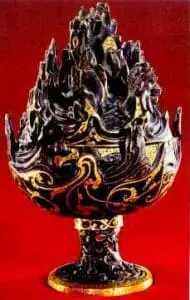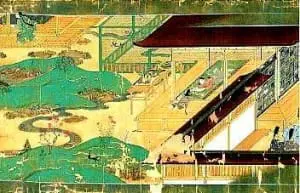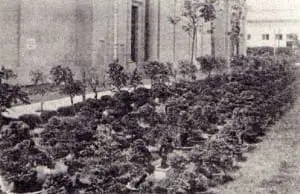
To find the answer to this question, let us embark on a journey through its mysterious past…
In ancient times, during the era of shamanism and early Taoism in China, there existed legends and myths about sages and mystics often referred to as “immortals” who lived deep in the mountain wilderness, sustaining themselves on rare plants and exotic elixirs. The mountainous regions where these sages lived were considered sacred places, the abode of mythical beings and powerful deities. These ancient Chinese beliefs had a significant influence on the populace.

Rocks and stones with interesting patterns resembling sacred mountains were considered talismans. People who possessed them believed they held divine power that transferred to the person who owned them.

Some of the collected stones had natural openings and hollows, reminiscent of caves where ancestral spirits were believed to dwell, and such stones were used as ritual incense burners. The smoke emanating from the natural openings in the stones would swirl around, representing spiritual mist enveloping the sacred object. During the Bronze Age, artistic versions of such lamps, called BOSHANLU, were created.
At one point in history, stones representing sacred mountains were placed in shallow PEN vessels (water vessels from the Neolithic period) surrounded by water, creating a miniature world.
Around the 2nd century, Dhyana Buddhists brought knowledge of ancient Ayurvedic medicine and the cultivation of medicinal trees and shrubs in pots.
By merging Dhyana Buddhist knowledge of horticulture with the Taoist miniature world, a new concept emerged, continued by Chan monks planting tree saplings, gradually leading to more realistic depictions of miniature landscapes. It is believed that these were the initial beginnings of creating miniature landscapes (Chinese PENJING), from which bonsai later emerged.

During the 11th and 12th centuries, China exerted significant cultural influence on neighboring countries. From China to Japan, the first miniature landscapes were imported through Chan Buddhism. Chan, pronounced as Zen in Japan, had a significant impact on Japanese culture and art.
Zen monks played a crucial role in transmitting and spreading bonsai among the Japanese aristocracy and samurai. For them, bonsai was a religious object, “green stairs leading to Heaven.” At the heart of bonsai cultivation lies the balance between man and nature. The cultivator dedicates themselves to bonsai, nurturing creativity within themselves, and experiencing the rhythm of the changing seasons anew each year. Bonsai cultivation requires a lot of care and attention, but as a reward, it brings peace of mind, a sense of refreshment, and inner tranquility.
At one point in history, stones representing sacred mountains were placed in shallow PEN vessels (water vessels from the Neolithic period) surrounded by water, creating a miniature world.
Around the 2nd century, Dhyana Buddhists brought knowledge of ancient Ayurvedic medicine and the cultivation of medicinal trees and shrubs in pots.
By merging Dhyana Buddhist knowledge of horticulture with the Taoist miniature world, a new concept emerged, continued by Chan monks planting tree saplings, gradually leading to more realistic depictions of miniature landscapes. It is believed that these were the initial beginnings of creating miniature landscapes (Chinese PENJING), from which bonsai later emerged.

From Japan, bonsai spread to the West in the late 19th century. Bonsai exhibitions were held in Philadelphia in 1876, Paris in 1878, 1889, and 1900, while the first major exhibition took place in London in 1910. Today, bonsai is not just a privilege of the upper class but has evolved into a well-known and recognized culture and art form worldwide.
-Dean Čebić, Bonsai Association Zen
Prijavite se na naš newsletter kako biste primali najnovije vijesti i informacije vezane uz KOI & BONSAI SHOW ZAGREB.

